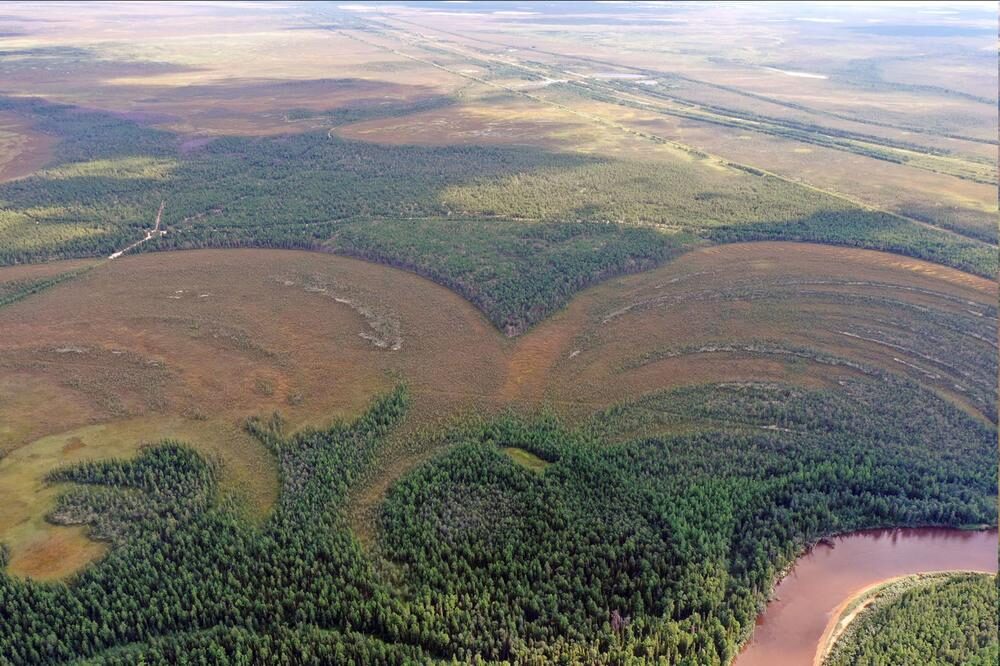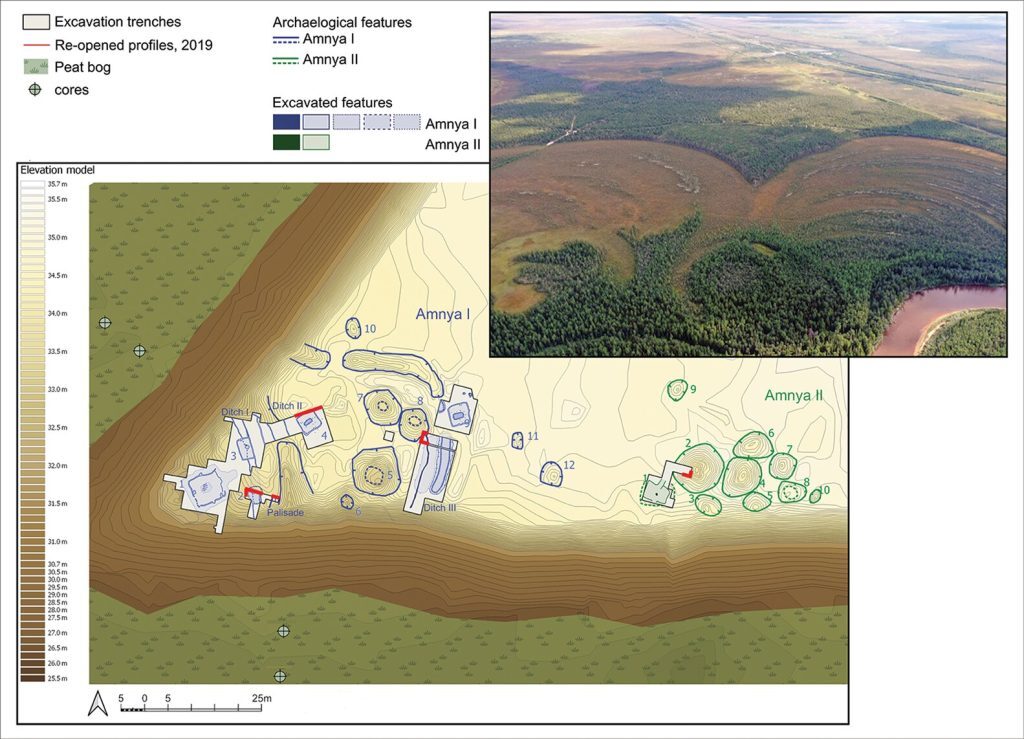
This finding reshapes our understanding of early human societies, challenging the idea that only with the advent of agriculture would people have started to build permanent settlements with monumental architecture and have developed complex social structures. The study, "The World's Oldest-Known Promontory Fort: Amnya and the Acceleration of Hunter-Gatherer Diversity in Siberia 8000 Years Ago," was published in the journal Antiquity at the beginning of December.
The article can be accessed here: https://doi.org/10.15184/aqy.2023.164.

Tanja Schreiber, archaeologist at the Institute of Prehistoric Archaeology in Berlin and co-author of the study, explains, "Through detailed archaeological examinations at Amnya, we collected samples for radiocarbon dating, confirming the prehistoric age of the site and establishing it as the world's oldest-known fort. Our new palaeobotanical and stratigraphical examinations reveal that inhabitants of Western Siberia led a sophisticated lifestyle based on the abundant resources of the taiga environment." The prehistoric inhabitants caught fish from the Amnya River and hunted elk and reindeer using bone and stone-tipped spears. To preserve their surplus of fish oil and meat, they crafted elaborately decorated pottery.
Approximately ten Stone Age fortified sites are known to date, with pit houses and surrounded by earthen walls and wooden palisades, suggesting advanced architectural and defensive capabilities. This discovery challenges the traditional view that permanent settlements, accompanied by defensive structures, only emerged with farming societies, thus disproving the notion that agriculture and animal husbandry were prerequisites for societal complexity. The Siberian findings, along with other global examples like Gobekli Tepe in Anatolia, contribute to a broader reassessment of evolutionist notions that suggest a linear development of societies from simple to complex.
In various parts of the world, from the Korean peninsula to Scandinavia, hunter-gatherer communities developed large settlements by drawing on aquatic resources. The abundance of natural resources in the Siberian taiga, such as annual fish runs and migrating herds, probably played a crucial role in the emergence of the hunter-gatherer forts. The fortified settlements overlooking rivers may have served as strategic locations to control and exploit productive fishing spots. The competitive nature arising from the storage of resources and increased populations is evident in these prehistoric constructions, overturning previous assumptions that competition and conflict were absent in hunter-gatherer societies.
The findings underscore the diversity of pathways that led to complex societal organizations, reflected in the emergence of monumental constructions such as the Siberian forts. They also highlight the significance of local environmental conditions in shaping the trajectories of human societies.



Reader Comments
Somebody may know but to share that knowledge would upend our current 'dogma-based' societal hierarchy.
It is located at the arctic circle, in a region that nowadays does not provide the environment and natural resources for local societies to generate the surplus food to engage in such large projects. Nor does it imply the need - the tribes living there are traditionally nomadic, for the same reason. Whybuild a giant fortress when you are hardly ever there ?
Either the climate was much warmer at that time (OMG, that cannot be ... ! ). Or, as some "crazy" theories and tropical archeological finds in the artic suggest, this landmass was situated at much lower latitudes at times. But this cannot be either ...
Were they forts or were they places to overwinter whilst the arctic night passed, a place for people and cattle to be safe from hungry predators? Some suggest that the arctic ocean reached from hereabouts down to the Caspian, that being the reason that Europe was seen as a seperate continent to Asia. Alexander was informed that the link still existed when he passed by the Caspian.
Which does not make sense, if you think of it. Especially since they presumed a conflict with another tribe. You can bet the opposing tribe will seize it as soon as you leave, sparing themselves mof months or years of hard labour.
Elaborate fortified dwellings only make sense if for a sedentary life style. No nomadic tribe of known history used such a strategy.
The flash freezing happened within minutes. And this effect is one of predicted local results of the theorized 12.000 year solar outburst cycle. Which happens to coincide with a magnetic pole weakening and excursion, and temporary displacement of the poles during the event.
This is the theory that sounds most plausible to me.
[Link]
There were no oceans, only shallow seas.
The caste system meant the BRHMN regulated norms and the Raja caste regulated people.
So many perished with the evidence below current sea levels.
No 'Titanic type' attempts to retrieve any of this evidence ... masses of ivory under the North Sea for example. Cities also. Relatively shallow waters
Thank you
This competition may arise in two ways:
First, a reduction in resources as a result for example of a colder climate, meaning there is less to eat. (Yes, local or regional climate has continually changed in the past, sometimes dramatically).
Second, an initial abundance of resources in an improved local climate, leading to a population growth, which eventually outstrips the ability to provide for everyone and finally leads again to shortages of food.
Also, there's the possibility of other populations moving in from outside.
In the end it's the same thing - too many people, not enough food. (It happened at the transition of the Bronze Age to Iron Age when the climate got colder and wetter. The result was a gradual (or sometimes rapid) breakdown in society, competition for resources, and a need for groups to defend what they could from others. And an eventual re-structuring of society).
There is increasing evidence, as has been suggested at Gobekli Tepe, that the adoption of fixed locations to have control of resources actually led to the development of agriculture, rather than the other way round.
[Link]
So you can find the same megaliths in Montana at Sage Mt. [Link]
When humans know their true history, they will know their true value and potential. There are those among us who clearly don't want that.
No vowels used in writing on stone or metals to save effort.
Not Abraham, Brahmin. 12 divisions each devoted to one special area of knowledge and technology.
Directing at a specific audience. "Readied minds". Smart
Funny that I thought that same sentence this morning as I answered. I skip data too knowing I'll figure it out regardless and whomever else who should would too.